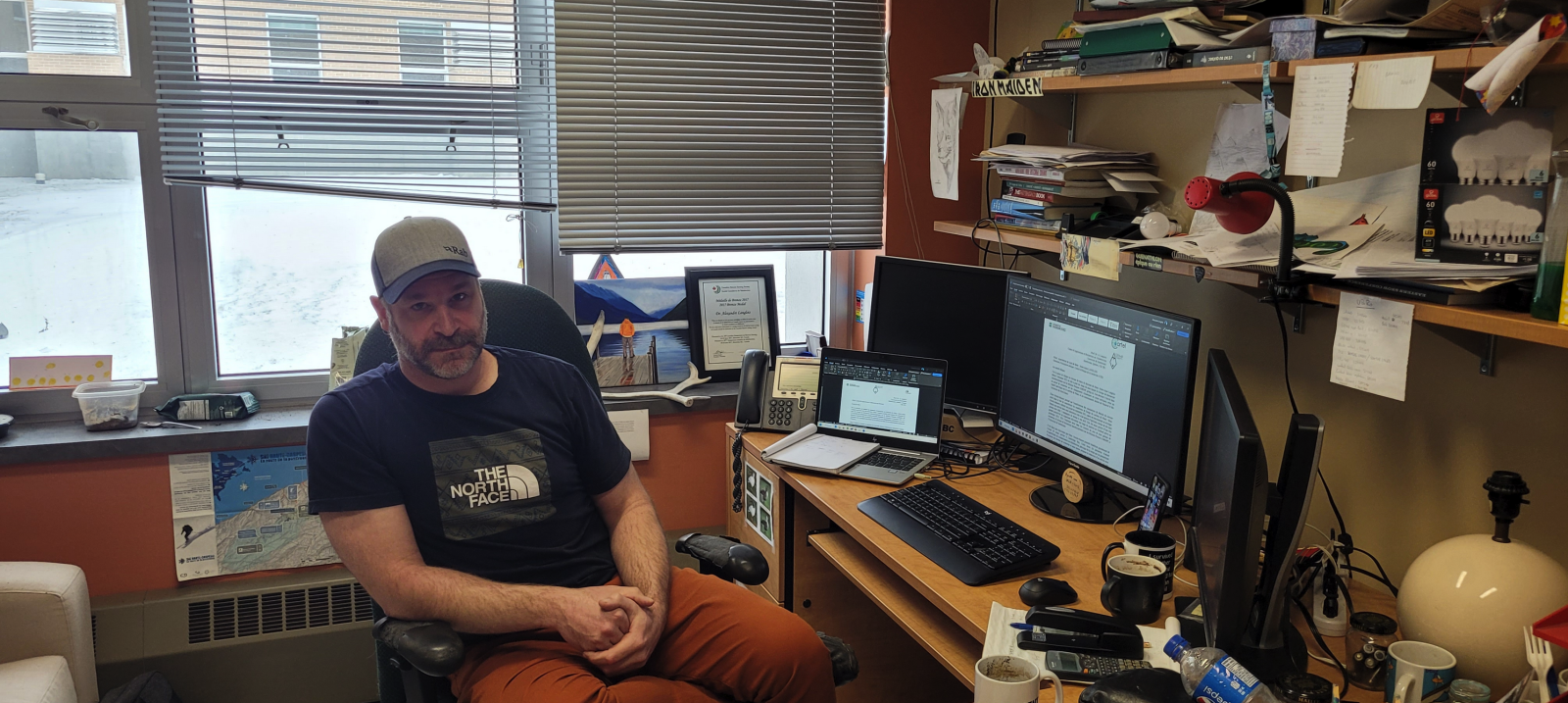By Lawrence Belanger
Local Journalism Initiative
In the far north, teams of researchers across multiple disciplines work on the tundra, on the glaciers, and with Indigenous communities to gather data on the arctic climate in order to monitor the region as the global climate changes. Dr. Alexandre Langlois, a professor at the Faculté des lettres et sciences humaines of the Université de Sherbrooke, is one of those researchers. When he and other researchers go to the Arctic, “our goal,” he says, is to “improve the way we monitor those changes from space using satellites and using models.”
Langlois, with an undergrad in Physical Geography, a Master’s Degree in Remote Sensing, and a Ph.D. in Geophysics, works with biologists to understand the impact of climate change’s new weather patterns on animals such as caribou. “My role is to provide information on the state and changes of the surface,” using models and remote sensing to look at snow and soil in order to understand how it affects arctic fauna.
His last trip to the Canadian Arctic was last year when 11 students and researchers went to the tundra for six weeks. This year, “we go back March 31,” says Langlois. During these trips, they travel the tundra on skidoos, monitoring meteorological stations and taking measurements of snow and soil. “We take snow measurements, [including] all the characteristics of snow: density, temperature, microstructure, soil temperature and type of vegetation underneath,” while also using unmanned aerial vehicles to get a broader view.
They don’t have enough of what Langlois refers to as “temporal data,” containing information about snow characteristics, temperature levels, and more. It’s hard to keep measurements coming in consistently, due to how Arctic research functions. The lifecycle of a typical arctic research project according to Langlois, begins with making funding requests, and then only continues if your proposal is accepted. “Then they say ‘well we’ll give you 30,000 to study XY and Z,’” he explains. “Then…over [a] period of 2-3 years, you hire a master’s student, you go there, you do the fieldwork, you publish your paper, and then that’s it.”
To address this, Langlois and other researchers are constructing a permanent, multidisciplinary site, with a “whole bunch of instruments and a big instrument park, that would allow us to have temporal coverage of data.” This means that they will have more individual points of data relating to the arctic’s weather and seasonal changes, instead of relying on temporary facilities, yearly expeditions, and a constantly changing field of Master’s students.
He calls the site a potential “gamechanger”, which is being constructed with federal collaboration from Parks Canada, Environment and Climate Change Canada, and academic partners in McGill, the University of Western Ontario, and the Université de Montréal.
Going to the Arctic itself is more straightforward than one might think. Commercial flights get him to the Canadian north for a typical mission, connecting various Inuit communities, although not always directly. Sometimes, Langlois and others have to take the “milk run,” where “you have to go through several communities to get where you need to.”
“Sometimes we also charter planes,” says Langlois. “If we go in remote areas or an Inuit community without an airport.” When he worked on Baffin Island, they had to charter a plane with skis that could land directly on the glacier. In cases like those, they “drop you there in tents, and you stay there for a couple of weeks,” explains Langlois. Most recently, he travelled to the Norwegian archipelago of Svalbard, to start a project involving the islands’ reindeer. That journey involved little fieldwork and was mostly lectures, meetings, seminars, and training.
Langlois hopes his work will lead to better and improved monitoring of the changes going on in the Arctic. “Right now, we’re just witnessing the change,” he says, referring to the melting of ice and snow accumulations in the circle, so projections of future milestones, such as when the Arctic Ocean will be completely ice-free during the summer months, are unreliable. When he first started his Ph.D., the estimate was for 2095. “When I finished, it was 2075. When I started my postdoc, it was like, 2045. When I finished a postdoc was 2035. So over five years, we reduced by pretty much 60 years.” It’s accelerating faster than scientists thought, which Langlois thinks indicates some “key processes” lacking in their simulations.
“By improving this, then you can make better decisions for sustainable development of the Arctic,” said Langlois.


